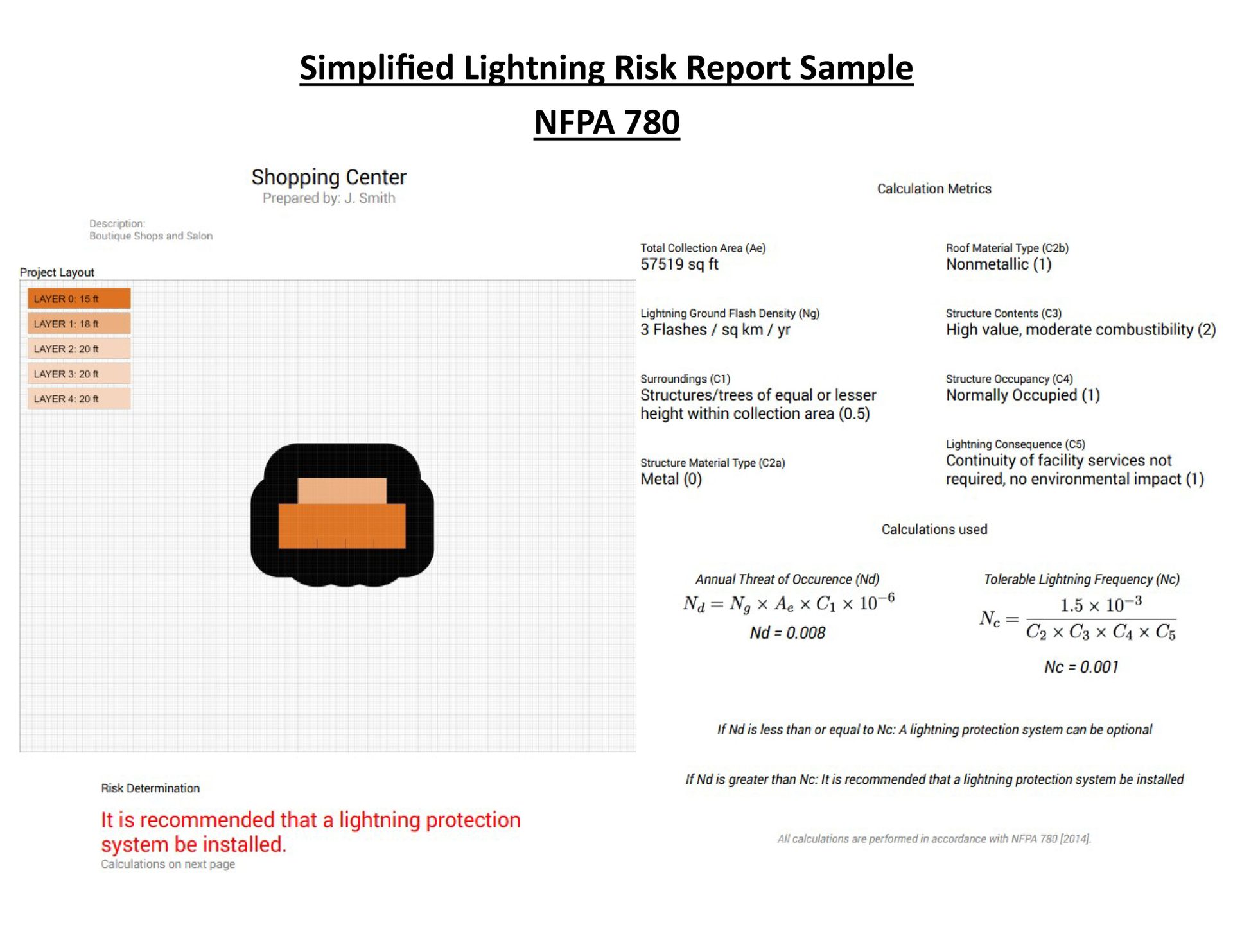All images courtesy of East Coast Lightning Equipment.
By Jennifer Morgan
Imagine a billion-volt lightning bolt striking a building; not just a cinematic scenario, but a real, imminent risk in today’s increasingly unpredictable climate.
For over 120 years, the National Fire Protection Association’s (NFPA) Standard 780 has stood as the definitive guide for effective lightning protection. Within the standard lies a crucial tool: the Simplified Risk Calculator, designed to quantify lightning risk for specific structures, empowering architects, engineers and building owners to shield properties from nature’s electric wrath.
Simple Tools to Quantify Lightning Risk
Lightning’s ability to ravage concrete, disrupt intricate electrical systems and undermine critical infrastructure raises a pressing question: What does this risk mean for your project? The NFPA 780’s Simplified Risk Calculator offers a tailored answer, providing a matrix to precisely quantify this natural force’s threat to specific structures. This knowledge is pivotal for building professionals in determining the necessity of a lightning protection system. Accessible as an app on various commercial websites, this quick-to-use tool often yields surprising results.

Parameters of the Simplified Risk Calculator
The tool evaluates five key parameters to assess a facility’s vulnerability:
- Structural Type and Location: Assessing the geographic location, essential in determining lighting strike frequency.
- Structural Dimensions: Reviewing the size and height, as larger footprints and taller structures typically increase vulnerability.
- Surrounding Environment: Considering general locale such as nearby taller structures and natural elements, such as trees, to evaluate exposure to lightning strikes.
- Occupancy and Contents: Gauging risk based on building occupancy and contents, especially those flammable, hazardous, valuable or challenging to access or evacuate.
- Consequences of a Lightning Strike: Weighing the potential for human injury, operational disruption, environmental impact, historical preservation and damage to irreplaceable equipment.

Beyond Geographic Location: A Holistic Assessment
Lightning risk is not solely determined by high-lightning activity regions. The NFPA 780 calculator’s comprehensive approach can reveal unexpected risks – a smaller structure in a lower-zone risk may face heightened danger due to specific contents or construction materials. In contrast, a larger building in a high-risk area might have a reduced risk due to its construction type and occupancy. This tool emphasizes the importance of a holistic risk assessment over a generalized approach.
Case Study: A Practical Application
Consider a large, 60-pump gas station and convenience store in the Midwest, a region with moderate lightning activity. Initial assessments placed its risk as moderate based on location. However, the NFPA 780 calculator identified a high-risk score due to the building’s large footprint, the presence of flammable materials and high occupancy. This insight led to the installation of a lightning protection system on the store and the fuel canopies, demonstrating the tool’s vital role in preventing potential disasters.



